Écrit par Sander Houston
Les inondations continuent d'affecter de vastes zones de la Zambie. Un protocole d'action précoce (EAP) vise à atténuer l'impact des inondations prévues en permettant le déblocage de fonds pour la mise en œuvre d'actions précoces convenues avant l'inondation (un mécanisme appelé Forecast Based Financing).
In the words of Mulambwa Mwanangono, the previous disaster manager of Zambia Red Cross: ‘Anticipation lives on Data, Forecast Based Financing is a function of Data’. Disaster managers need an analysis of the impact of previous floods as understanding what happened in the past is the key to forecasting the possible impacts of future events and planning actions accordingly. Based on historical (hydrometeorological and impact) data, we aim to develop effective flood forecasts and warnings. Forecasts provide a time window of opportunity that enables a proactive approach in which Early Actions can be carried out. Zambia Red Cross Society (ZRCS) performed the first light activation after the IFRC approved the protocol at the end of 2020. Since all activities needed for a full activation of the EAP had not been implemented yet we call this a light activation,
Ce blog partage des informations sur l'activation de la lumière d'inondation. en Zambie qui s'est déroulée du 18 au 24 février 2021.
Background on the Impact Based Forecasting (IBF) Portal and Early Action Protocol (EAP)
ZRCS worked with the 510 data & digital team at the Netherlands Red Cross to analyze and visualize data needed to support operational decisions during the anticipatory actions. ZRCS data analysis is integrated within 510’s Impact Based Forecasting (IBF) Portal. This is an operational decision-making support tool developed to integrate data and visualize the impact a disaster will have. ‘The IBF Portal was operationally used during the activation to visualize and disseminate information that supported the operational decision making of disaster managers’, said Stefania Giodini (team lead of 510). A trigger model, which is used in the portal, is developed to determine at what threshold the Early Action Protocol (EAP) should be activated. The trigger model, also developed in collaboration with 510, is based on the water discharge threshold that corresponds to a 20-year return period flood. When asked about the importance of the IBF Portal Zaitun Munawar (former Program Delegate at ZRCS) said: ‘the IBF portal supports a National Society in a more proactive approach by giving it time to implement early actions’. She continues by saying that ‘by doing so we can reduce the impact on communities and properties’. The EAP is developed collaboratively with all organizations and communities involved to decide on what appropriate anticipatory actions to undertake. ‘This for example includes informing the communities, evacuation of residents, and distribution of water purifying tablets’. Pour en savoir plus sur le portail de l'IBF, cliquez ici.
Organisations impliquées
Le Centre climatique de la Croix-Rouge et du Croissant-Rouge a fourni et joué un rôle clé de facilitation dans le développement du PAE. Le Action de la DREF basée sur des prévisionsLe Comité de validation du PAE, un fonds commun géré au niveau mondial par la FICR pour soutenir l'activation du PAE, a validé le PAE par l'intermédiaire de son comité de validation en décembre dernier et fournit un financement pour le PAE de la FICR. Société de la Croix-Rouge de Zambie (ZRCS) pour effectuer la préparation, le prépositionnement et les actions d'anticipation requises dans le PAE une fois qu'il est activé. Cette fois-ci, comme toutes les activités nécessaires à l'activation complète du PAE n'avaient pas encore été mises en œuvre, seule une partie du PAE a été activée. Le développement du PAE inondations en tant que tel et l'exercice de simulation pour tester le PAE font partie d'un programme plus vaste appelé Response Preparedness II (RPII financé par le ministère néerlandais des Affaires étrangères), coordonné par le Centre de recherche sur les inondations de l'Union européenne. NLRC et son équipe data & digital 510 together with the Red Cross Red Crescent Climate Centre. Similar work is taking place in Mali (through the same program) as well as in Ethiopia, Uganda, and Kenya (through the Innovative Approaches to Response Preparedness (IARP) funded by IKEA Foundation), where early warning/early action systems are developed by the host national societies. The local government sectorial offices contributed to both the EAP development as well as light activation. The Unité de gestion et d'atténuation des catastrophes (DMMU), Système mondial d'alerte aux inondations (GLOFAS), Autorité de gestion des ressources en eau (WARMA), et Département météorologique de Zambie (ZMD) a également fourni une assistance technique.
Activation du protocole d'action précoce
When Clayton Lumwaya (GIS Specialist at ZRCS) was asked about the experience with the activation of the flood trigger he said: ‘we have not experienced this amount of rainfall in quite a long time. When the trigger level was reached, the IBF Portal sent an automatic message to the Disaster Management and Mitigation Unit (DMMU).’- DMMU is the governmental stakeholder that provides leadership and coordination in the adoption and implementation of Forecast-based Financing. Clayton continued by saying: ‘When the system showed the risk of floods in the districts we immediately informed all stakeholders and looked into the alert’. His colleague, Wina Wina (Disaster Manager at ZRCS), added: ‘Once we validated the alert the Early Action Protocol could be activated’.
According to Malika Noisette (Response preparedness technical advisor at The Netherlands Red Cross), there were two concerns when activating the Early Action Protocol. The first one being that ‘the ZRCS branch of the area covered by the trigger was not fully equipped yet and therefore not ready to implement all the Early Actions’. The second one was that ‘according to current procedures of the FbA by the DREF, it’s not possible to activate the EAP twice within one season. The rainy season begins in the middle of November and lasts until April. This was a concern since a flood with a higher impact was expected to occur later on in the season and Zambia Red Cross wanted to keep the chance to utilise the FbA by the DREF funds to activate their Early Action Protocol later on, should a bigger trigger be reached in March or April’. Therefore, NLRC looked for internal funds to ensure that this activation takes place while reserving the IFRC’s fund for a potential bigger activation.
Journée d'activités sur le terrain par jour
Jour 1 & 2
Une carte de la zone d'intervention, qui montre les zones où l'on s'attend à ce que l'impact de l'inondation se produise, a été fournie via le portail de l'IBF. Le comité d'alerte précoce a ensuite été informé afin de mener une étude sur le terrain dans les zones qui seraient gravement touchées. De cette manière, il a été possible de contextualiser l'information du déclencheur à la réalité du terrain, ce qui permet de déterminer les actions anticipatives pertinentes. Une recommandation a ensuite été rédigée à l'intention de toutes les parties concernées. Des réunions urgentes ont été organisées pour évaluer la situation et les options. Les stocks disponibles ont été vérifiés et les activités d'action précoce ont été contrôlées pour déterminer si elles étaient prêtes à être activées. Une lettre du gouvernement a été envoyée pour l'informer de la réception d'un message d'alerte et lui demander le feu vert pour activer le protocole.
Jour 3 et 4
Le gouvernement local a été impliqué, après quoi l'autorisation de poursuivre l'activation de la lumière a été reçue. Une évaluation rapide des inondations a été menée sur le terrain afin de déterminer l'étendue des inondations, les vulnérabilités et les bénéficiaires, en collaboration avec l'unité de gestion des catastrophes.
Jour 5, 6 et 7
La logistique a été mobilisée et l'équipe de mise en œuvre constituée. Les premières actions ont été mises en œuvre alors que la pluie continuait à tomber. Les communautés ont été informées des risques d'inondation et ont reçu des informations sur les pratiques sanitaires saines et les zones de montagne sûres. Des discussions de groupe ont été menées au sein de la communauté et avec les parties prenantes afin de comprendre les besoins et les perceptions des communautés. Les inondations ont commencé le 24 février.
Day 8 – 12
La phase d'intervention d'urgence a commencé après l'inondation.
Il s'agissait notamment de distribuer des produits non alimentaires aux personnes touchées par les inondations.
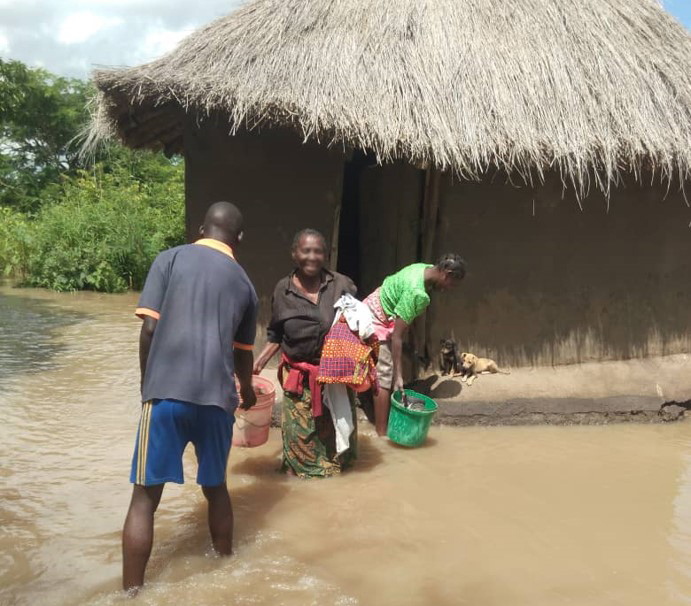
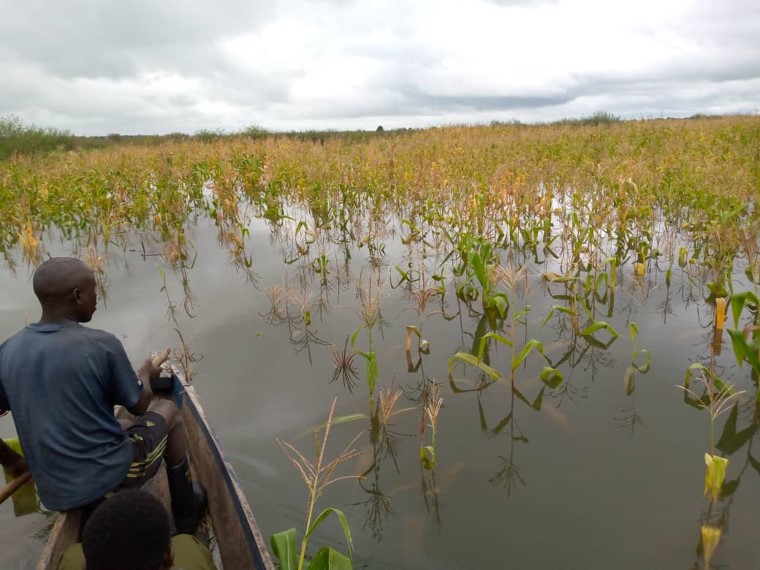
Déplacement des ménages Submersion des cultures
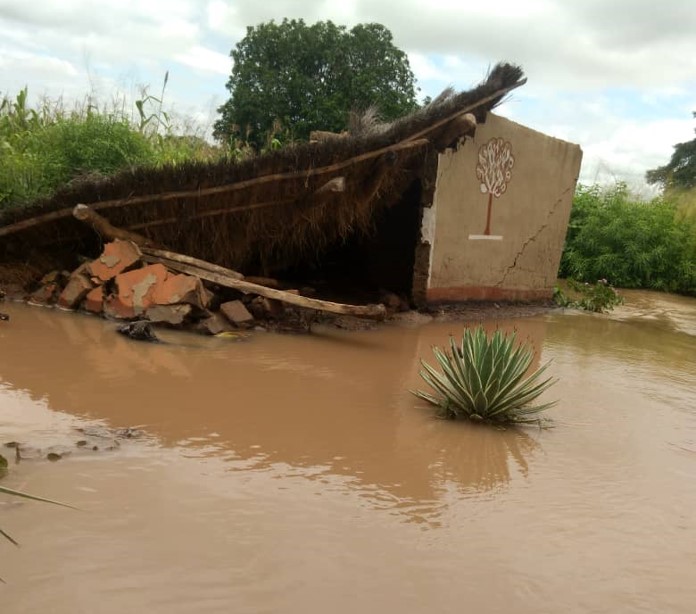
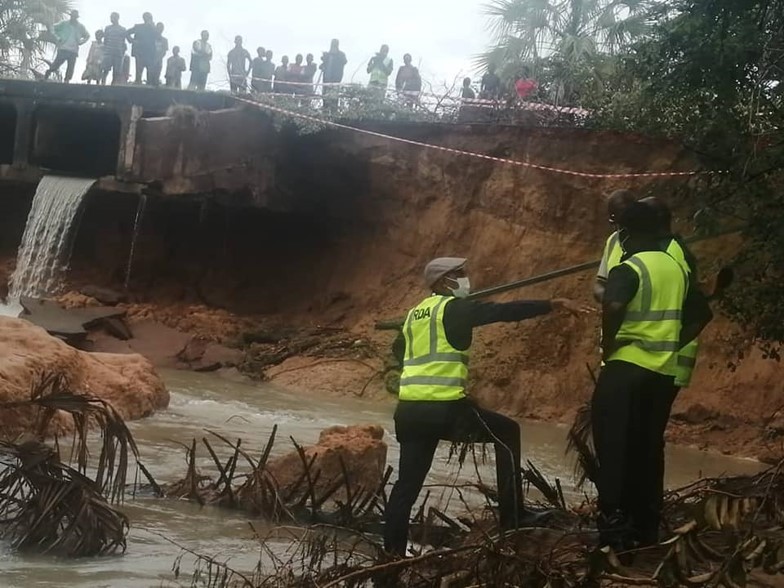
Destruction des abris Destruction des voies d'accès
Qu'avons-nous appris de l'activation ?
- Il est important d'envisager d'autres sources de financement que la FbA par le DREF lorsque les activités de préparation ne sont pas finalisées dans les zones sinistrées. Grâce à la collaboration déjà en place, ZRCS et NLRC ont pu mobiliser des ressources très rapidement, mais cette question devrait être abordée avec les partenaires avant toute activation.
- Il a été observé que même si les activités de préparation n'étaient pas finalisées dans la zone d'intervention, la ZRCS pouvait toujours réussir à repositionner ses stocks et à mobiliser rapidement le personnel et les volontaires.
- Trop de temps a été consacré à l'attente de l'approbation gouvernementale pour le déploiement d'actions dans la zone d'intervention. Des autorisations préalables doivent être mises en place pour permettre un traitement rapide lorsque le PAE est activé.
- Une meilleure collaboration avec les ministères de la santé, de l'éducation et de l'agriculture est nécessaire. En particulier pour étendre la capacité d'action de la ZRCS dans les quartiers où il n'y a pas de volontaires, mais où des structures de coordination sont peut-être déjà en place dans ces ministères et pourraient être utilisées.
- Les parties prenantes qui déclenchent l'activation doivent être prêtes à agir avant d'atteindre le seuil d'alerte maximal (par exemple entre 80% et 100% de probabilité de survenue de l'inondation) afin d'éviter tout retard dans la mise en œuvre d'actions précoces.
La valeur ajoutée de la collaboration avec des experts en données lors de la mise en place d'un financement basé sur des prévisions
510 co-designed and developed the IBF Portal and supports the National Society in the data preparedness journey. Together with the Zambia Red Cross and its data team, 510 initiated the data analysis needed for the development of the Early Action Protocol. The IBF portal proved to be a crucial tool to disseminate information among stakeholders. It acts as a meeting point for the disaster managers from ZRCS and governmental agencies to consult the data, share information and action plans and coordinate the response. Giodini explains: ‘We also knew there is always space for improvements and this was a great occasion to learn: we now know for example that we need to visualize wards on the map so that the disaster manager can decide which one to alert and that we should show elevation so that low lying places can be easily identified. ’
Prochaines étapes
510 will now implement the user feedback from this test activation to update the IBF portal. Afterwards, the operational dashboard will be handed over to the Zambia Disaster Mitigation and Management Unit and all stakeholders will have access to it according to their mandate. 510 will continue to support Zambia while it’s moving towards a multi-hazard early warning system that also includes drought anticipation. Noisette adds by saying: ‘The [glossary_exclude]fact[/glossary_exclude] that we were able to do this in Zambia doesn’t mean that we can automatically do this in any country at any given time. We need to learn from this success and ensure that we turn it into a sustainable way of working. One example would be to set a coordinated team of NLRC and 510 experts with clear standard operations procedures, always available to work together in supporting our sister National Societies in quick decision making, in times of alerts and emergencies’.
Source de l'image : Société de la Croix-Rouge de Zambie
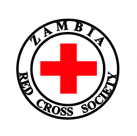
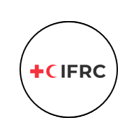
Des informations pertinentes sur les individus et les communautés dans le besoin peuvent être utiles pour fournir une aide humanitaire efficace et personnalisée. Notre politique de responsabilité en matière de données porte sur le traitement responsable des données dans le respect des normes éthiques et des principes dans le contexte humanitaire, en tenant compte des conséquences potentielles et en prenant des mesures pour éviter de mettre en danger les individus ou les communautés. Pour en savoir plus sur notre politique de responsabilité en matière de données, cliquez ici